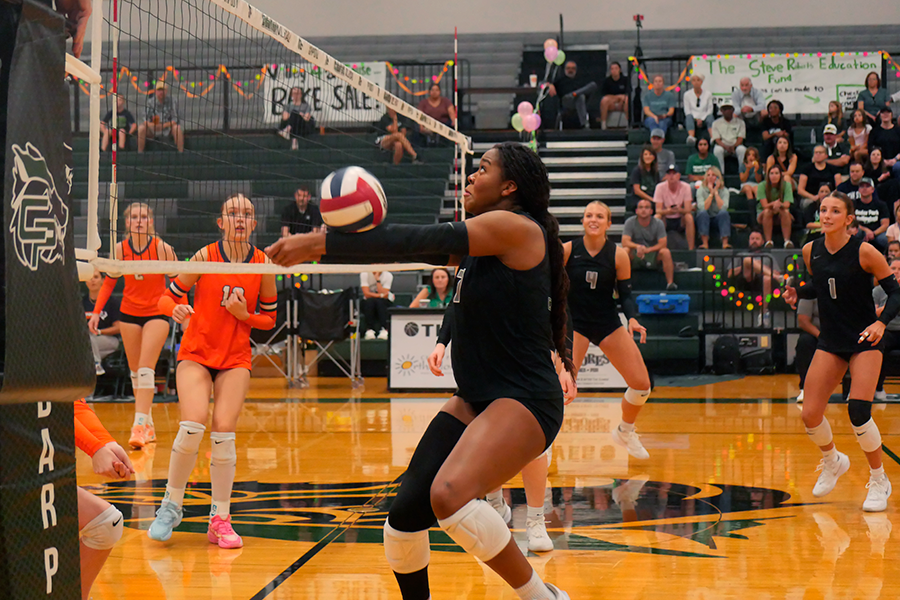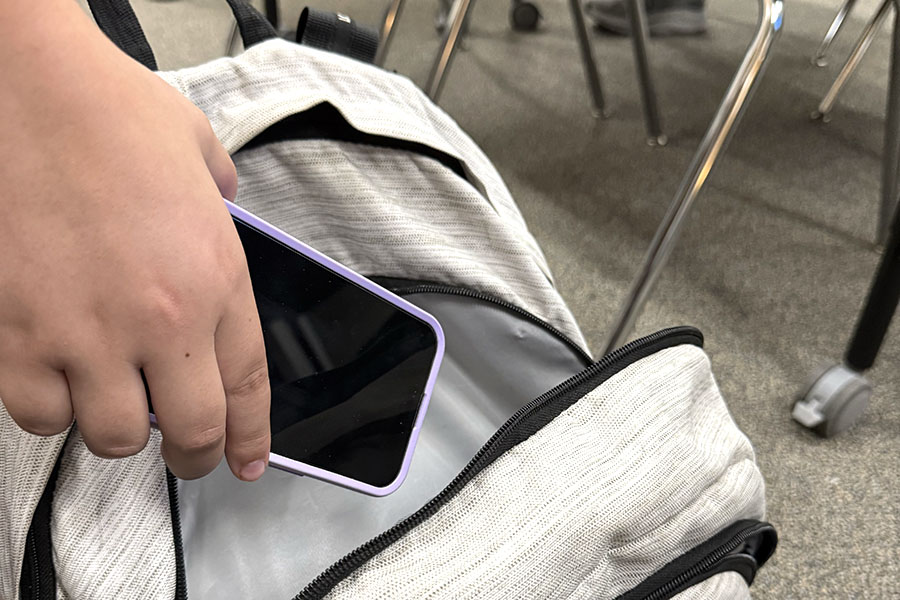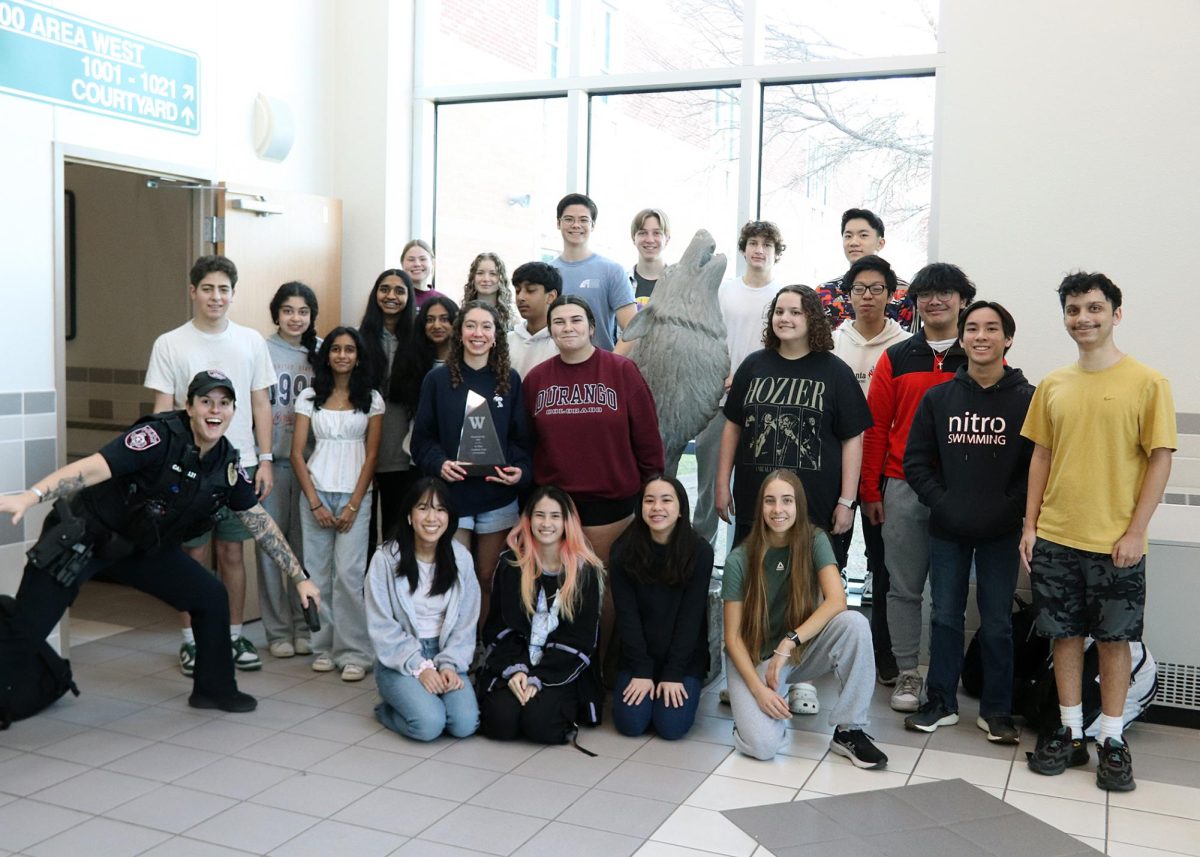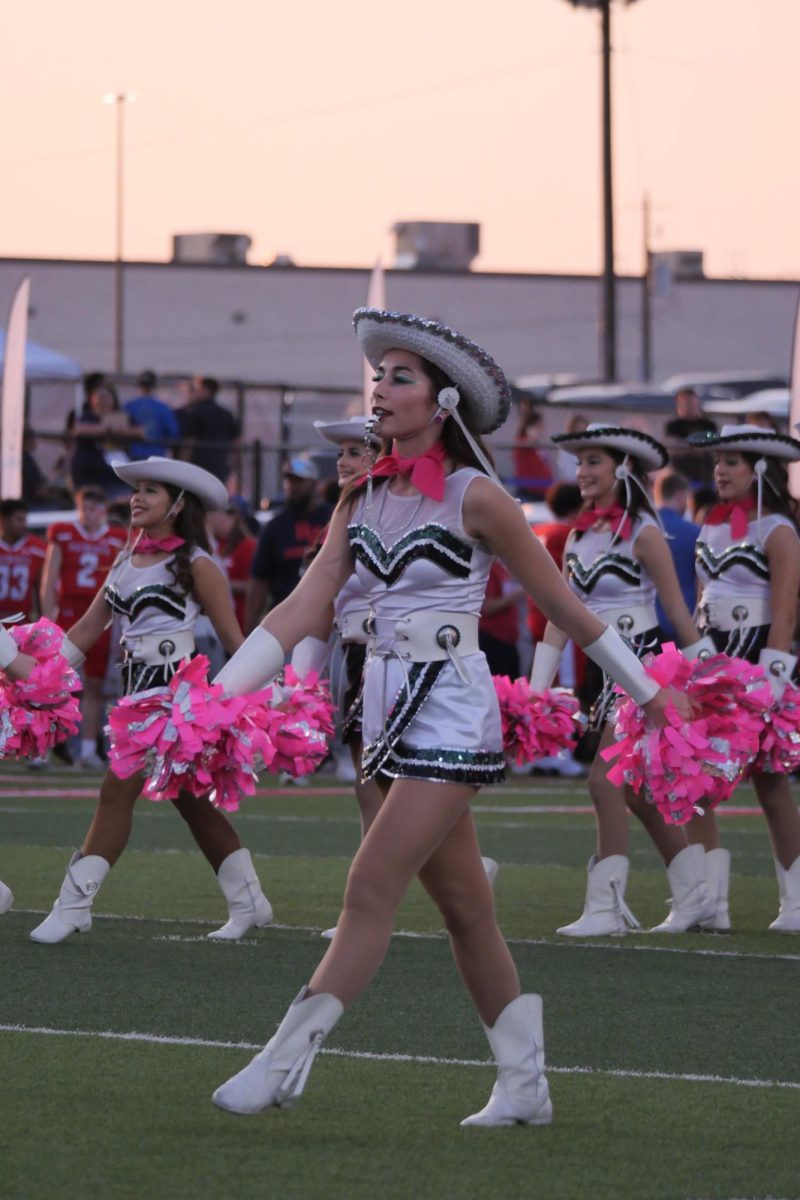Austin has seen many droughts in its long history. However, this summer Austin saw one of its most severe since the 1950’s, one of the worst droughts in Texas history. ThLakes, rivers, creeks and even aquifers fell into peril as their supply of rain vanished with the summer heat. Water restrictions and new citywide mandates popped up all summer in an attempt to conserve the city’s dwindling resources.
“Everyday there was some new story in the newspapers on what was being affected by the drought and it was almost like a miracle everytime it rained” Aaron Villalpando, junior said. “Even though I lived in Mexico for thirteen years, I’ve never experienced a summer as hot as this one.”
Water resources weren’t the only things in jeopardy this summer. Many of the native Texas plants and animals that depend on the waterways lost valuable shelter and food sources. The Barton Springs Park shows the most noticeable effects of the drought. The creeks, sinkholes, and caves that feed Barton Springs have dried up in the Greenbelt, cutting off the springs’ ability to refill. Even the Edwards aquifer (which also feeds Barton Springs and the City’s Water Plants) is struggling in its own battle for survival. The 160-mile long aquifer hasn’t been able to recharge fully since 2007. This has led to a steady lowering of the aquifer and, more noticably, Barton Springs.
“I actually did notice that the part [of the Springs] next to the actual pool was definitely a lot lower than normal.” Gabriela Aguilar, junior said. “Also, a lot of the grass around the [park area] was dead.
In addition to the disappearing aquifers, Austin has another aquatic Houdini at work. Lake Travis is experiencing record low levels as the lake performs a stunning vanishing act. The lake is twenty seven feet below its normal capacity and has entered into a category four drought stage, the highest level possible. These are the lowest levels Lake Travis has seen since 1917. To the dismay of many, the lake continues to dwindle closer and closer to a complete closure. As island after island pops up in front of the dam officials are beginning to consider closing the lake for safety purposes.
“It was really a bummer seeing the lake so low,” Aguilar said. “I couldn’t just drive out and take a swim like normal.”
Boat ramps and marinas are also closing down because of the water levels. Some of then no longer have enough water to operate in. Others are suffering from a severe drop in business as the lake becomes more dangerous to venture out on. Many personal boat docks have recently bottomed out as well, as the lake recedes beyond them. They sit on the empty lake bed like hollow shells as grass slowly grows in the spaces where water should be.
More than just providing recreational activities and summer memories, Austin’s suffering lakes and aquifers also supply the city with drinking water and energy. In an attempt to conserve water, the city has started enforcing a long series of water restrictions. Outdoor water use is now restricted to once a week activities. This includes washing cars, watering lawns and irrigation. Most neighborhoods enforce watering schedules by address numbers trying to cut back on wastewater. Because of the extensive evaporation caused by outdoor watering, decorative fountains and automatic pool pumps, they are no longer allowed to operate on a constant basis. The city is also limiting water usage in restaurants and other establishments; preventing waiters from serving water to customers unless it’s specifically requested.
Even with the recent rain the water tables are still dangerously low. It could take up to a week of steady rainfall for the aquifers to completely recharge. As the summer comes to a close we can only hope for a swift end to this modern day Dust Bowl. With hurricane season rolling in we may finally see some relief in the forecast.



![Jumping off the ground, senior linebacker Bennett Patton snatches the ball out of the air for an interception at Thursday’s game against Chaparral. Patton had two interceptions in the 56-14 victory, tying the school record for interceptions in a game. “I was just playing the game,” Patton said. “[I’m] going to go into next week, forget about it and stay humble.” Photo by Harper Chapman](https://cphswolfpack.com/wp-content/uploads/2025/09/bennett-interception.jpg)
![The fire department came to the school after students were evacuated when smoke started coming from the ceiling of a classroom. All students and staff are safe. “All of my friends left their stuff too, so we couldn’t contact our parents, and it was stressful,” senior Brynn Fowler said. “It was scary because I didn’t know [what was going on], and I couldn’t find anyone because it was a big crowd.” Photo by Anthony Garcia](https://cphswolfpack.com/wp-content/uploads/2025/09/firetruck.jpg)


![Sitting with her friend senior Sohpia Struve at last year’s Austin City Limits Festival, senior Ava Zuniga poses for a picture under a pavilion. They are frequent attendees at ACL, an annual music festival at Zilker Park. “I would recommend seeing a bunch of people,” Zuniga said. “This past year, we camped out for Chappell [Roan] for a really long time. I think the whole point of ACL, [which] is a lot of fun, is that you can go see so many different people, even if you don’t know them. So by camping by one person, it really limits yourself from being able to go see a bunch of people.” Photo courtesy of Ava Zuniga](https://cphswolfpack.com/wp-content/uploads/2025/10/EE9E9484-FE6F-4AA0-B5F5-0C177AB32841-1200x857.jpeg)
![Broadcast, yearbook and newspaper combined for 66 Interscholastic League Press Conference awards this year. Yearbook won 43, newspaper won 14 and broadcast took home nine. “I think [the ILPC awards] are a great way to give the kids some acknowledgement for all of their hard work,” newspaper and yearbook adviser Paige Hert said. “They typically spend the year covering everyone else’s big moments, so it’s really cool for them to be celebrated so many times and in so many different ways.”](https://cphswolfpack.com/wp-content/uploads/2025/05/edited-ILPC.jpg)




![Looking down at his racket, junior Hasun Nguyen hits the green tennis ball. Hasun has played tennis since he was 9 years old, and he is on the varsity team. "I feel like it’s not really appreciated in America as much, but [tennis] is a really competitive and mentally challenging sport,” Nguyen said. “I’m really level-headed and can keep my cool during a match, and that helps me play a bit better under pressure.” Photo by Kyra Cox](https://cphswolfpack.com/wp-content/uploads/2025/09/hasun.jpg)


![Bringing her arm over her head and taking a quick breath, junior Lauren Lucas swims the final laps of the 500 freestyle at the regionals swimming competition on date. Lucas broke the school’s 18-year-old record for the 500 freestyle at regionals and again at state with a time of 4:58.63. “I’d had my eye on that 500 record since my freshman year, so I was really excited to see if I could get it at regionals or districts,” Lucas said. “ State is always a really fun experience and medaling for the first time was really great. It was a very very tight race, [so] I was a bit surprised [that I medaled]. [There were] a lot of fast girls at the meet in general, [and] it was like a dogfight back and forth, back and forth.” Photo by Kaydence Wilkinson](https://cphswolfpack.com/wp-content/uploads/2025/03/Kaydence-2.7-23-edit-2.jpg)
![As the support team sits and poses for a photo in the cafeteria with the counseling team they eagerly wait to start their day. "We [all] seem to be a team, I get up every day and there's days where I don't want to go to work today, but I'm thankful that I have a job and I'm blessed to have what I have," Christopherson said. Photo Courtesy of Julie Weltens.](https://cphswolfpack.com/wp-content/uploads/2025/01/AF9E8470-10D7-4C91-BF28-EC8F86BAB66C-1200x852.jpeg)
![Officer Stephanie Cash is in her second year as an SRO at CPHS. “Seeing [students] grow over the years has been kind of cool,” Officer Cash said. “Freshmen that [are] all over the place and then in the next couple of years get a little more squared away and go to class and do work and start thinking about the future. Being a part of a student's growth is the best way to measure my success as an SRO.” Photo Courtesy of Cedar Park Police Department's PIO, Alicia Gallagher.](https://cphswolfpack.com/wp-content/uploads/2024/12/CPHS-SRO-900x1200.jpg)
![As he sprints with the ball, senior running back Trae Hill breaks a tackle during Friday’s 35-14 loss against the Vandegrift Vipers. Hill ran for 135 yards and two touchdowns during the game. “[Scoring] was electric,” Hill said. “It always feels good to score, but the O-line did everything.”](https://cphswolfpack.com/wp-content/uploads/2025/09/IMG_0795allie.varfb_-1200x799.jpg)














